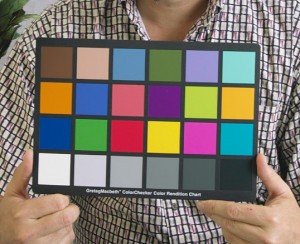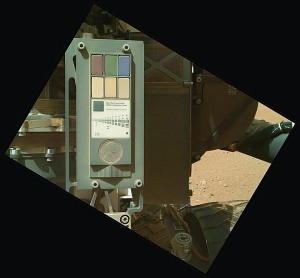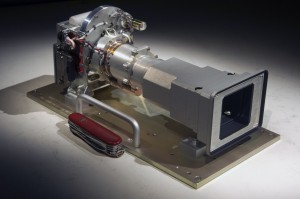The Unrest
A few months ago I was in the market for a small tablet. I was feeling a little claustrophobic in the apple world, as my laptop, my phone, my wireless router, etc were all Apple products. I had heard some good things about the new Android operating system. The family has an iPad2 wireless only that mostly lives in the house. I was annoyed that Apple doesn’t put a GPS in the wireless only version of the iPads, this meant that when we took the iPad out on a road trip and tethered it to my phone, the maps program didn’t work a worth a damn. Really, Apple? Would that have been so hard? Other Android wi-fi only tablets do that and come in cheaper. One that rose to the surface was the Google Nexus 7. Hell, if you are going to jump ship from Apple, Google seemed a good bet. Now, they don’t make the tablet, Asus does, but Google writes the code for the software on the Nexus 7. Ok, looks good. Better resolution than the iPad and a narrower profile (almost giant iPhone like) and more open source. This was also big draw. I have felt that tablets are artificially handicapped. Why can’t I use them as a phone? my over 40 eyes would love a giant iPhone. And I have no shame, I would absolutely hold an a tablet to my head to make a phone call. Why not? It’s not like talking to no one and waving my arms like a crazy person looks any better, as people with Bluetooth ear buds do.
Fine. I did the research and settled on a Nexus 7 with both wi-fi and cell service. Ordered it, got it set up from AT&T and settled in buying all the apps that had sister apps over from the Apple world. I was able to download apps so I could make free phone calls to and from my Nexus using Google voice. Very cool. And of course I had Google maps, not the travesty that Apple maps has made for itself. (I once had apple maps insist I drive into Boston bay to get to the waste treatment facility, which while on the coast is attached to the mainland.) Great. Maybe I had the new “One Device” it could be my phone, my GPS, my calendar, etc, and it was big enough to use and just small enough I could, depending on what I was wearing, get it into a pocket. Now all I had to do is learn the operating system.
The Bumpy Ride
Android OS is…. interesting. There would be a few cool new things, then some inexplicable dumbness. I was able to get apps that synced all the calendars on my iphone and Mac Book Pro, as well as my contacts. Not too hard. So far so good. The Nexus being a Google product it tries really hard to shove Gmail down your throat. Ok fine. I Set up a Gmail account. But around here I realize I have left the serenity of the “walled garden” that Apple provides. There is a Gmail only email app on the Nexus that seems nice enough, but that is not my primary email, so I am never going to use that app. There is also a generic email app but it seems to be really limited in functionality. After doing some research, I determine that “Aquamail” is the best most flexible powerful email app out there. I get it, set it up for my multiple email addresses. It has lots of “under the hood” settings about layout etc, most of which were bad. I kept thinking “this tablet is bigger than my iPhone, why is it harder to check my email on this thing than it is on that?” everything was busy, hard to read, hard to keep track of emails, etc. after much futzing I got it to where I was “OK” with it, but not really happy. Plus Aquamail is made by some Russian developer, and I couldn’t get out of my mind that he could have put a back door in it and now some Russian hacker has access to all my emails. Also now I have 3 different email apps all not great all checking emails and downloading them. Battery life suffers. I mess around with various settings and improve it somewhat.
On the Road
I have a big trip planned where I will drive up the east coast, vacation with my family, then bus and fly back to work, then fly and bus back and rejoin the vacation already in progress. I figure it is going to be a big “sea trial” for this new Nexus 7. We drive up the east coast using the Nexus 7 as our GPS. Even plugged in it cannot keep up with the power demands of the tablet. Battery levels drop during the whole day. If we had driven another hour we would have lost navigation as it couldn’t charge itself fast enough. Something has got to be wrong I think. I jigger with email fetch settings, and some other settings. The next day it seems a little better, although we don’t drive as far. Not good. One of the allures of a tablet is longer battery life than my phone. I know GPS use taxes the thing, but IT WAS PLUGGED IN. into a 2 ah USB port so it should have been fine.
During my vacation I decide the following things: although a bit busy, I like widgets. I like Google Chrome insofar as it integrates with the GPS of the tablet and gives you a welcome web page with info about things to do in your area and tracks travel plans as long as the tickets were booked via your Gmail account. Voice recognition is surprisingly good. Battery life remains poor. And surprisingly, I miss having a front facing camera. The Nexus has a back facing camera, but ships with no apps to use it, which is odd. Of course Skype and other apps can use it, so it is not like it is useless.
Airplane mode
I then bus then fly back to DC. On the bus I read “Treasure Island” a free ebook installed on the Nexus to get me hooked on that feature. I do this because I couldn’t figure out how to download a movie via the “Google Play” store. Turns out you can do it, but the setup is counter-intuitive. When I get to the airport I have several hours to kill, so I decide to watch a movie, streaming “Zero Dark Thirty” via the 3G network. Taking a huge hit in my monthly use, but whatever, I chalk it up to the learning curve. On the plane I go back to reading the e-book. The rest of the travel is uneventful. “Zero Dark Thirty” excepted, I finally realize that by not buying an Apple product not only am I locked out of the “iTunes” library I am locked into the Google library, which is pretty weak. Movie selections are not great.
Anyway, during my stay in DC I figure out how to download movies, rather than stream them, so I download two for viewing on my travel back. I watch part of one on the plane. When we land I turn my tablet out of “airplane mode” and that is where the trouble begins. The screen starts blinking and flashing at first I assume as all the apps come online and try to call out to the world. I deplane. At baggage claim the tablet is still stuck in some sort of subroutine, and unresponsive. I reboot the thing, thinking that will fix it. It takes an extremely long time to boot. In fact it never finishes. It just gives me the Google Nexus logo which in this tablet is suspiciously like a giant “X”. I restart the boot. Nothing. I start using my iPhone to look up how to troubleshoot a Nexus. I boot in safe mode. Still hangs. I do more research. My bus comes. The entire 2 hour bus ride I spend killing my iPhone battery trying to troubleshoot, chat w Asus technicians etc, on how to get this thing running again. I finally pull the nuclear option and opt to wipe all my data on it. This does not fix it. Let me repeat, in just outside of two weeks, without downloading any exotic apps I manage to brick my Nexus to the point where even a hard reset cannot save it. the only hope apparently is to connect it to a PC. A PC?! That is it. I am done. I get an RMA from both Asus and B&H, which is where I bought it. I get my money back. And start over.
Nexus “X” of death
The Aftermath
It turns out the Nexus going belly up was a blessing in disguise. I ran out and bought an iPad Mini no longer upset about the price or feeling claustrophobic living within the iOS environment. It was like coming home to an old friend. As Steve Jobs said “It just works.” No buggy email apps, good battery life, excellent library in iTunes, nice size. I have even come around to apple maps, as it seems to have improved somewhat. The one thing I lost is the ability to call in or out like a phone on the mini. Some version of this can be done i think by jailbreaking it, or maybe calls within wi-fi area only. I have found I don’t care so much, as long as everything else works. My one regret is not making one phone call on my Nexus 7 in a public place when it was still working, preferably surrounded by hipsters in a bar or coffee-house, to see the ensuing confusion in their eyes as to whether it was lame or cool.






